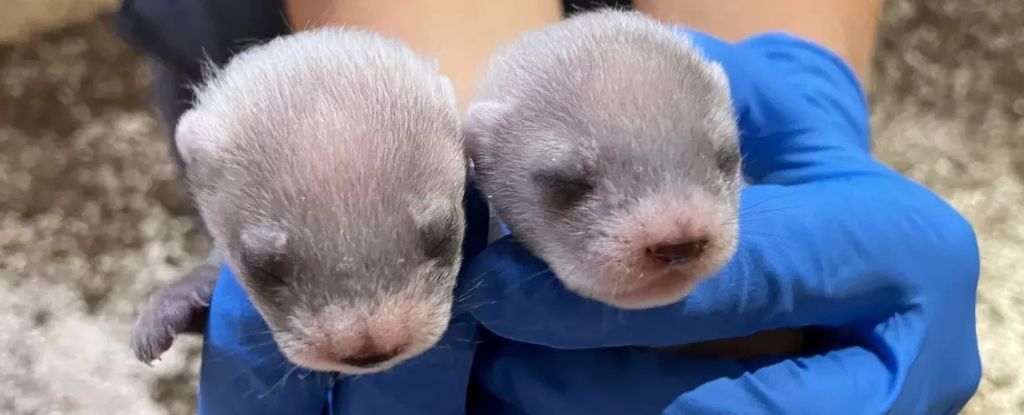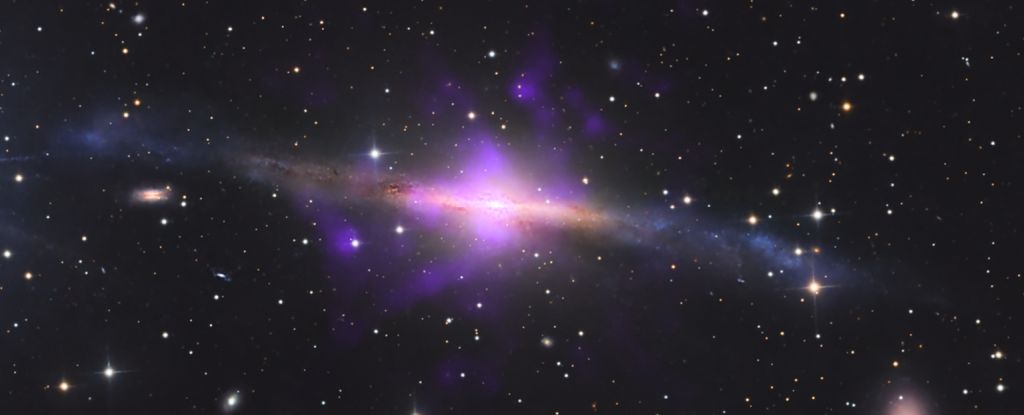In 1979, the black-footed ferret was believed to be extinct. More than four decades later, scientists in the US have not only cloned the species from the last wild survivors, but one of those clones has now given birth to two healthy pups – one male, one female.
The new mother, named Antonia, was cloned from a black-footed ferret named Willa who died in 1988 at the San Diego Zoo. That year, conservationists in the US began a captive breeding program, using just 18 black-footed ferrets (Mustela nigripes), caught in the wild from a small, inbred population found still living in Wyoming in 1981.
Today, after numerous reintroductions, there are thought to be roughly 350 black-footed ferrets living in the wild, and these animals are suffering from low genetic diversity, disease, habitat loss, and declines in the species’ main prey, prairie dogs.
Some experts argue the future of the species now depends on captive breeding and cloning efforts.
Antonia, for instance, was cloned from a tissue sample that contained three times as many unique genetic variations as the average black-footed ferret currently living in the wild.
“Introducing these previously unrepresented genes could play a key role in increasing the species’ genetic diversity, vital to healthy, long-term recovery,” reads a press release from the US Fish and Wildlife Service (FWS).
“The successful reproduction of a cloned endangered species is a landmark in conservation genetic research, proving that cloning technology can not only help restore genetic diversity but also allow for future breeding, opening new possibilities for species recovery.”
The feat was achieved by a team of researchers and conservationists at the FWS, the Smithsonian National Zoo and Conservation Biology Institute (NZCBI), Revive & Restore (a nonprofit wildlife organization), San Diego Zoo Wildlife Alliance, ViaGen Pets & Equine (a pet cloning and genetic preservation group), and the Association of Zoos and Aquariums.
Now that the reproduction part is taken care of, though, the reintroduction challenges begin. Whether conservation cloning can actually help restore endangered species in the wild remains highly controversial.
The cloning of Antonia and the birth of her offspring are the culmination of decades of expensive work and several failed attempts, and some scientists argue this time and money could have been put to better use conserving habitats or re-wilding places that will provide homes for more than just one species.
Habitat loss and human–wildlife conflict are leading threats to most endangered terrestrial wildlife species, globally, and black-footed ferrets are no exception, having lost much of their shortgrass prairie to agriculture.
If the habitat is no longer there, cloning extinct or highly endangered animals like the passenger pigeon, the thylacine, Przewalski’s horse, or the wooly mammoth will be a waste, argues wildlife ecologist David Jachowski in a 2022 paper for BioScience.
“In the fog of excitement surrounding this new tool, we must maintain a strong focus on addressing the issues that cause most species to become endangered or extinct in the first place,” writes Jachowski.
“What is clear is that conservation cloning alone cannot save endangered species… Only when we restore and secure adequate habitat and reduce the potential for human–wildlife conflict will these species ever be recovered in the wild.”
Whether or not either of Antonia’s offspring will make it in the wild is unknown.





